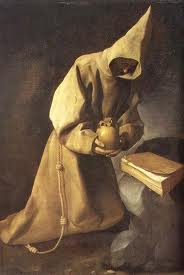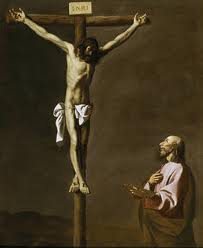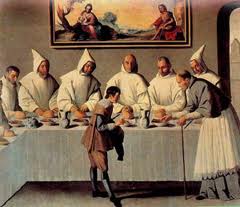Baroque: Francisco de Zurbarán
Francisco de Zurbarán was a Baroque Spanish painter who is most famous for his paintings of clergy members such as nuns and monks. Zurbarán was such a great painter that he has been nicknamed ‘the Spanish Caravaggio’. He was also a friend and contemporary of the famous Baroque Spanish painter, Diego de Velázquez.
Francisco de Zurbarán (1598-1664)

Francisco de Zurbarán was born and baptized in the town of Fuente de Cantos in the region of Extremadura. Zurbarán began drawing as a child, sketching objects using charcoal. In 1614, Zurbarán’s father managed to get him an apprenticeship with an artist named Pedro Díaz de Villanueva in Seville for three years. It was here that Francisco de Zurbarán met some of the other great Spanish painters-to-be, such as Alonso Cano. During his apprenticeship, Francisco painted one of his first paintings of his artistic career, a painting of the ‘Inmaculada’ (Immaculate Conception) in 1616.
At the end of his apprenticeship in 1617, Francisco de Zurbarán married María Páez in Seville, with whom he had three children. Tragically however, María would die only a few years later. Francisco then remarried in 1625 to Beatriz de Morales, who was herself a widow at the time.
By 1622, Francisco de Zurbarán’s fame had grown which led him to be contracted to paint a portrait for the church in his hometown of Fuente de Cantos. In 1626, Zurbarán signed a contract to paint for the Dominican Order in San Pablo el Real in Seville. For this Order, Zurbarán would paint twenty-one paintings in the space of just eight months.
In 1627, Francisco de Zurbarán painted one of his most famous paintings, which was celebrated by many of his contemporaries, the ‘Cristo en la Cruz’ (Christ on the Cross). We can clearly see the Baroque style of Zurbarán in this painting. The piece of white linen that Christ is wearing which is so fluid, contrasts strongly with the taught muscles of His body.

Francisco de Zurbarán signed another contract in 1628 with the Convent of Our Lady of Mercy and settled down with his family in Seville, where he set up his own workshop. Here he painted the portrait of San Serapio, a man who had died after being tortured. Zurbarán managed to show the horrors of this ordeal in his painting without resorting to a gory depiction of the scene. Zurbarán completed the piece without painting even one drop of blood.
Zurbarán travelled to Madrid in 1634. In the Spanish capital, Zurbarán’s style evolved significantly thanks to the input of Diego de Velázquez. Francisco moved towards a more Caravaggio-esque style of painting after studying many of the Italian painter’s works. While in Madrid, Francisco de Zurbarán was also named the official painter for the Spanish King.
Zurbarán then went to live by the coast, where he encountered the ships heading for the Americas and other parts of the world. It was here that Francisco de Zurbarán began producing religious paintings for the American market including some for the capital of Peru, Lima. Some of the greatest paintings from this period of his life can be found in Auckland Castle in the town of Bishop Auckland in County Durham, England. Here you can find a series of twelve paintings entitled ‘Las tribus de Israel’ (The Tribes of Israel), which were probably stolen from a Spanish ship during a pirate attack. His painting production increased significantly thanks to his popularity in South America. In 1647, a convent in Peru ordered thirty-eight paintings, of which twenty-four were of the Virgin Mary.

In 1650, Francisco de Zurbarán relocated to Madrid where he painted many of his most famous paintings, including the portrait of the Virgin Mary in the painting ‘La Anunciación’ (The Annunciation) which can now be found in the Museum of Grenoble, and ‘Cristo llevando la Cruz’ (Christ Carrying the Cross) in the Cathedral of Orleans. The year of 1658 saw all four of the great Spanish painters, Zurbarán, Velázquez, Cano and Murillo, in the city of Madrid. However this phenomenon did not last long as only a few years later Zurbarán died.
Francisco de Zurbarán was a painter whose style changed a lot during the course of his life. However he was excellent at painting fabrics, for which he must have studied extensively. Furthermore, the foregrounds of his paintings were highly detailed, particularly in relation to the depiction of light.
